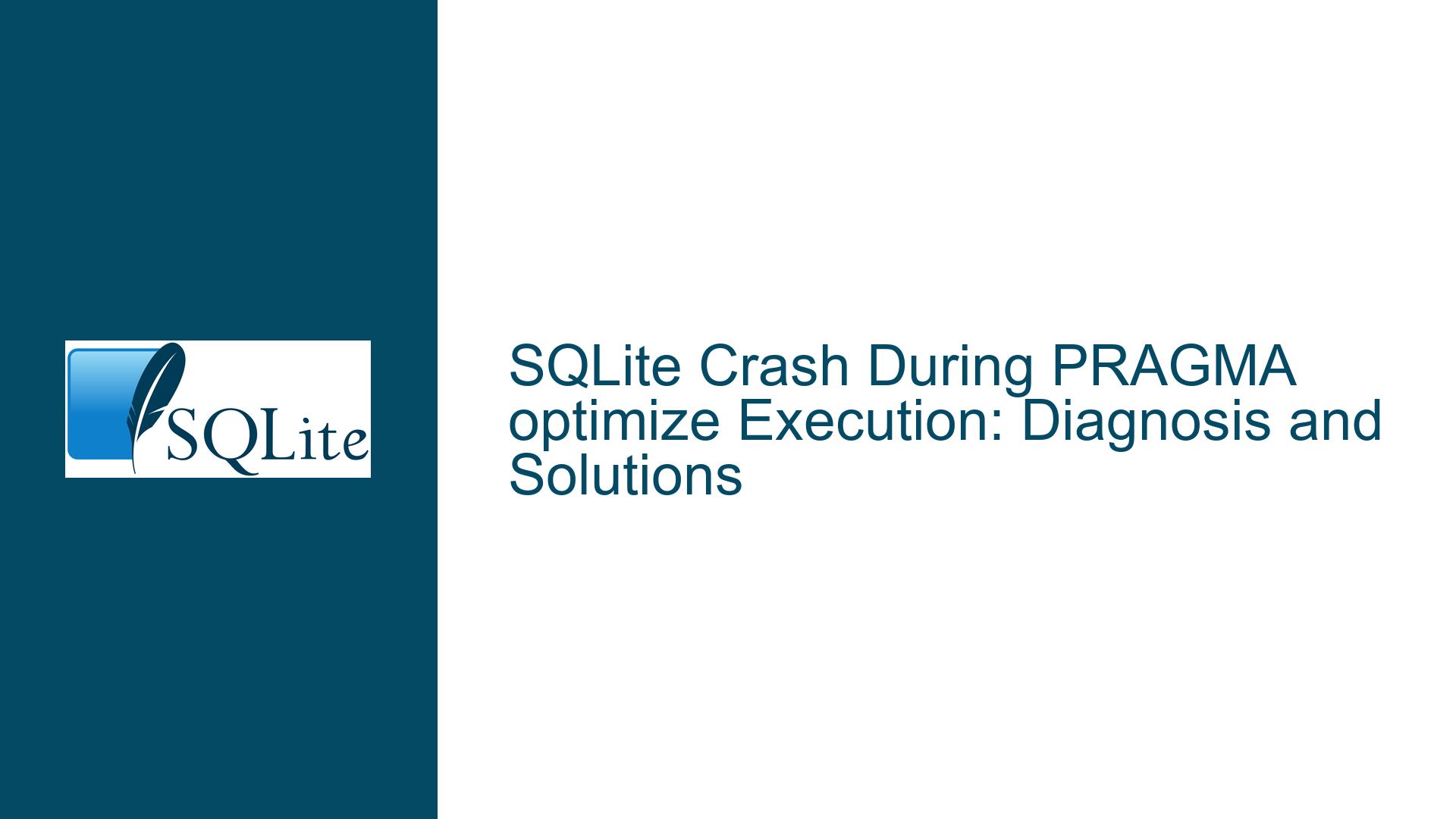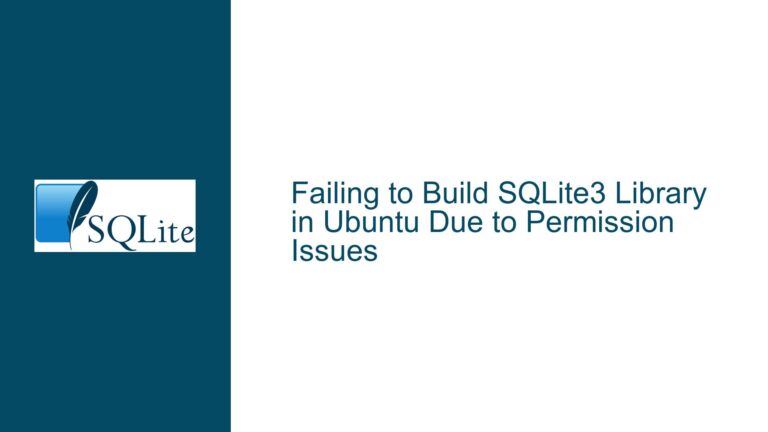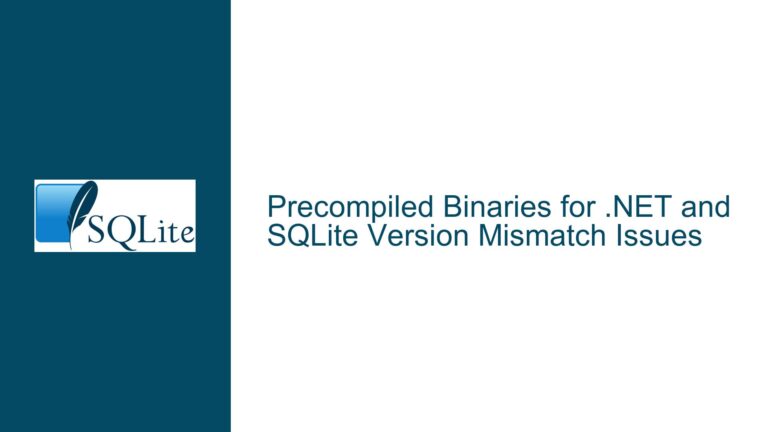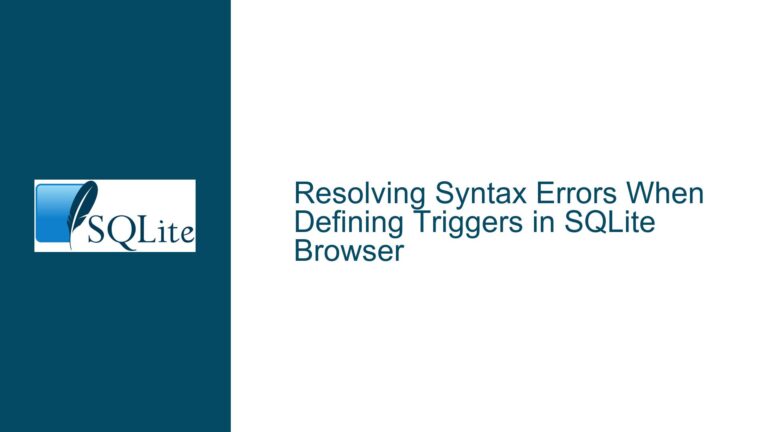SQLite Crash During PRAGMA optimize Execution: Diagnosis and Solutions
SQLite Crash During PRAGMA optimize Execution
The issue at hand involves a one-time crash occurring during the execution of the PRAGMA optimize command in SQLite. The crash is reported in a production environment where the SQLite database is being managed by a background service. The crash occurs just before the database is closed, during a routine resource storage operation. The stack trace provided does not align with the expected behavior of SQLite functions, suggesting that the crash may not be directly related to SQLite itself but rather to external factors such as memory corruption or incorrect symbol files.
The PRAGMA optimize command is used to optimize the database by analyzing and potentially rebuilding indexes and statistics. This command is typically executed to improve query performance and is generally considered safe. However, in this case, the crash suggests that something unusual occurred during its execution. The stack trace indicates that the crash might be due to a corrupted call stack, possibly caused by a buffer overflow or an invalid memory access in another part of the application.
Given that the crash is not reproducible and the stack trace does not provide clear insights into the root cause, it is challenging to diagnose the issue definitively. However, the crash could be related to memory corruption, incorrect symbol files, or an issue with the SQLite Encryption Extension (SEE) being used in this context. The SEE version of SQLite adds encryption capabilities, which might introduce additional complexity and potential points of failure.
Interrupted Write Operations Leading to Index Corruption
One possible cause of the crash is interrupted write operations leading to index corruption. When the PRAGMA optimize command is executed, SQLite performs various operations on the database, including analyzing and potentially rebuilding indexes. If these operations are interrupted—for example, by a sudden power failure or an unexpected termination of the process—the database indexes could become corrupted. This corruption might not be immediately apparent but could lead to crashes during subsequent operations, including the execution of PRAGMA optimize.
Another potential cause is memory corruption elsewhere in the application. The stack trace provided does not align with the expected behavior of SQLite functions, suggesting that the crash might be due to a buffer overflow or an invalid memory access in another part of the application. This could result in the corruption of the call stack, leading to unpredictable behavior and crashes. The fact that the crash occurs just before the database is closed suggests that the issue might be related to the cleanup or finalization of resources.
The use of the SQLite Encryption Extension (SEE) could also be a contributing factor. The SEE version of SQLite adds encryption capabilities, which might introduce additional complexity and potential points of failure. If the encryption layer is not functioning correctly, it could lead to unexpected behavior during database operations, including the execution of PRAGMA optimize. Additionally, the SEE version might interact differently with the underlying system, potentially leading to issues that do not occur with the standard version of SQLite.
Implementing PRAGMA journal_mode and Database Backup
To address the issue, several troubleshooting steps and solutions can be implemented. First, it is essential to ensure that the database is not being corrupted due to interrupted write operations. This can be achieved by enabling the Write-Ahead Logging (WAL) mode using the PRAGMA journal_mode=WAL command. The WAL mode provides better concurrency and can help prevent database corruption in the event of a crash or power failure. Additionally, it is crucial to ensure that the database is properly backed up regularly. This can be done using the sqlite3_backup API, which allows for online backups of the database without blocking other operations.
Next, it is important to verify that the application is not experiencing memory corruption. This can be done by running the application with a memory debugging tool such as Valgrind or AddressSanitizer. These tools can help identify buffer overflows, invalid memory accesses, and other memory-related issues that could lead to crashes. If memory corruption is detected, the offending code should be fixed to prevent further issues.
If the issue is related to the SQLite Encryption Extension (SEE), it is recommended to test the application with the standard version of SQLite to see if the crash still occurs. If the crash does not occur with the standard version, it might be necessary to investigate the SEE implementation and ensure that it is functioning correctly. Additionally, it is important to ensure that the correct symbol files are being used when analyzing crash dumps. Incorrect symbol files can lead to misleading stack traces, making it difficult to diagnose the issue.
Finally, it is important to monitor the application for any further crashes and collect additional information if the issue reoccurs. This can include enabling detailed logging, capturing core dumps, and using a debugger to analyze the state of the application at the time of the crash. If the issue becomes reproducible, it will be easier to diagnose and fix.
In conclusion, the crash during the execution of PRAGMA optimize is likely due to a combination of factors, including interrupted write operations, memory corruption, and potential issues with the SQLite Encryption Extension. By implementing the suggested troubleshooting steps and solutions, it is possible to mitigate the issue and prevent further crashes. However, if the issue persists, it may be necessary to conduct a more in-depth investigation to identify and address the root cause.





